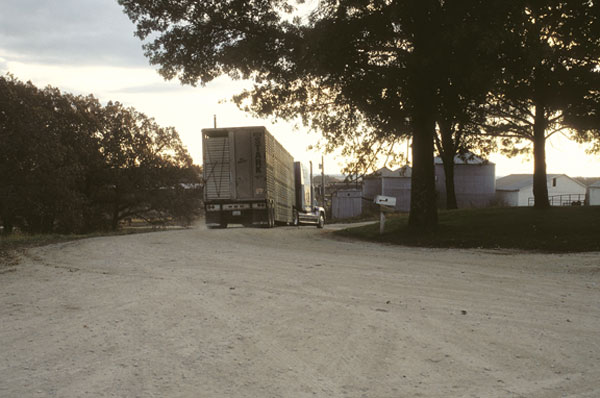“Fed cattle prices surged to new record highs in recent weeks, spurred by steadily rising wholesale beef prices, which give beef processors more incentive to pay up for slaughter-ready animals. But consecutive days of lower wholesale beef prices since Wednesday last week and light wholesale sales volume fuel expectations for demand to weaken for beef from domestic retailers in the weeks to come,” explained Penton market analyst John Otte Friday.
January 31, 2014

“Many market watchers feel that prices are top-heavy (perhaps an understatement) but demand remains good for all classes, with buyers very concerned about the size of available offerings over the next several months,” said analysts with the Agricultural marketing Service (AMS) Friday.
Compared to the previous week, feeder cattle and calves sold unevenly steady to $3/cwt. lower, with the full decline in the Northern Plains where prices have been the highest, according to AMS.
Feeder Cattle futures closed mixed on the week from an average of 29¢ higher to an average of 25¢ lower week-to-week.
Plus, calf and feeder markets felt some fallout from fed cattle and beef prices seeking a return to post-spike normalcy.
“Fed cattle prices surged to new record highs in recent weeks, spurred by steadily rising wholesale beef prices, which give beef processors more incentive to pay up for slaughter-ready animals. But consecutive days of lower wholesale beef prices since Wednesday last week and light wholesale sales volume fuel expectations for demand to weaken for beef from domestic retailers in the weeks to come,” explained Penton market analyst John Otte Friday.
Choice boxed beef cutout value reached a record $240.05/cwt. on Jan. 22 — it ballooned $40 in less than a month. On Friday, it was $223.39, but still about $23 higher than when the new year began.
“It appears retailers are not going to continue chasing beef prices at this time,” says Andrew P. Griffith, University of Tennessee agricultural economist, in his weekly market comments. “The industry knew a price escalation was inevitable. However, the magnitude of a price change was less certain, and it appears buyers may have been a little overzealous as beef prices have moderated this week. It would appear beef prices will continue to moderate over the next several weeks as the next big push for beef is not likely to occur until late April and May when consumers start firing up the grill.”
Choice boxed beef cutout value declined $13.77/cwt. week-to-week on Friday. Select was $11.40 lower. On Friday, Select was bringing a $1.36 premium to Choice.
Reluctance was also seen by packer buyers this week.
“Fed cattle trading never developed this past week with the last established market at more than an $8 premium to February CME Live Cattle futures,” AMS analysts explained.
After record-high live cattle prices the previous week at $147-$150/cwt., cattle feeders were content to bide their time. Through late Friday afternoon, the cash fed cattle trade was mostly inactive on light demand in all major cattle feeding regions, as was the case all week.
Live Cattle futures closed $1.72 lower in spot Feb week-to-week and then mixed from an average of 48¢ lower to an average of 44¢ higher.
“Tight supplies of feedlot-ready cattle will help support fed prices but a likely pullback in boxed beef values will increase pressure to push fed prices back down some,” said Derrell Peel, Oklahoma State University Extension livestock marketing specialist, in his weekly comments.
Subscribe now to Cow-Calf Weekly to get the latest industry research and information in your inbox every Friday!
The fundamentals still point higher, though. And, Friday’s annual Cattle report from the National Agricultural Statistics Service underscored the fact the nation’s cowherd begins the year smaller yet again.
Globally, beef markets are on the upswing, too.
According to a quarterly beef report from Rabobank, the Rabobank Global Cattle Price Index rose 6% between June and December.
“The Rabobank Global Cattle Price Index improved further in the second half of 2013, supported by both continuing strong Chinese import growth and lower-than-expected supply in the main export markets making cattle prices mainly positive,” explained Rabobank analyst Albert Vernooij.
“After such a dramatic run (wholesale and fed cattle prices), a pullback in both wholesale beef and fed cattle prices is more expected than not,” Peel says. “The major question and big unknown is just how much prices might drop back. While a series of very short-run factors have contributed to this unexpectedly large and rapid increase, the underlying longer-term fundamentals are in place to support strong prices. Part of the current market run has been due to short-bought retailers and post-holiday refilling of pipeline supplies, and it is not clear how much is due to demand strength looking forward. Assessing demand will be an ongoing process in the coming weeks. Meantime, supplies will likely stay relatively tight. Winter weather could play an especially important role in the ability to rebuild short-run supplies. The market picture may clarify significantly in the next two to three weeks.”
“Every rocket eventually reaches its optimum elevation and then it either levels out or explodes,” AMS analysts said of the recent market run. “The former is most likely with fundamental indicators fully supportive of the ongoing rally in cattle and beef demand.”
You might also like:
Do Beef Cattle Have A Biological Limit To Productivity?
Can The Fed Market Keep Climbing?
Wolves' Economic Bite On Cattle Goes Way Beyond Predation
3 Tips For Increased Beef Cow Profits
10 New Farm Trucks To Consider For 2014
Exclusive BEEF Survey: U.S. Beef Herd Is Mostly Black, But Changing Slightly
You May Also Like



